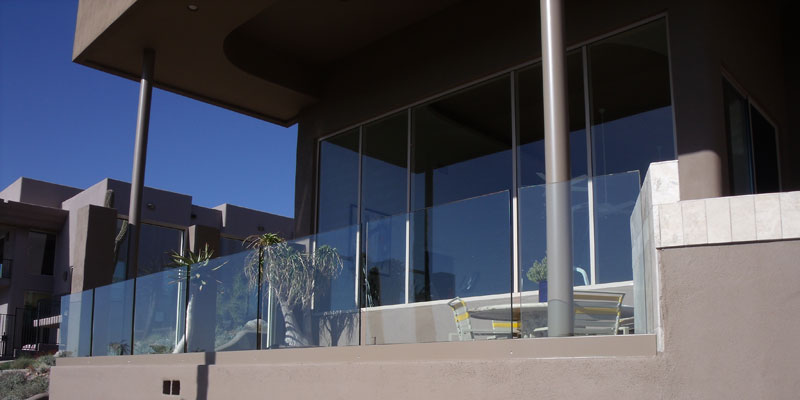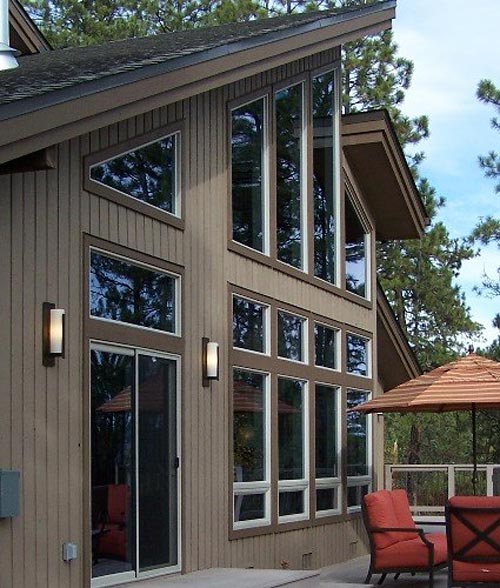Low-E Insulating Glass

About Low Emissivity Glass
In the hot Arizona climate the preferred choice of glass for windows and doors is Low-E Insulating Glass. Low-E (low-emissivity) is a term used for a surface that radiates, or emits, low levels of radiant energy. Low-E glass is manufactured by applying specific metallic coatings (silver, zinc or tin) to the surface of glass to reflect heat. There are two types of Low-E glass: hard coat and soft coat.Hard Coat Low-E Glass
Hard coat Low-E glass is manufactured by pouring a thin layer of molten tin onto a sheet of glass while the glass is still slightly molten. The tin actually becomes "welded" to the glass. This process makes it difficult or "hard" to scratch or remove the tin. Often this glass has a blueish tint to it.Soft Coat Low-E Glass
Soft coat Low-E glass, on the other hand, involves the application of silver, zinc or tin to glass in a vacuum. The glass enters a vacuum chamber filled with an inert gas which is electrically charged. The electricity combined with the vacuum allows molecules of metal to sputter onto the glass. The coating is more delicate or "soft".
When either type is added to the inner surface of a dual pane or insulated glass unit, it's referred to as a Low-E Insulated unit. The two types of Low-E glass have different performance characteristics. The soft coat process has the ability to reflect more heat back to the source. It typically has a higher R value. R values are a measure of resistance to heat loss. The higher the R value of a material, the better its insulating qualities. Below is a comparison of R values with the different types of glass configurations:
| Type of Glass | R Value |
| Clear Insulated Glass 7/8" overall thickness | 2.08 |
| Hard Coat Low-E insulated glass | 2.45 |
| Hard Coat Low-E insulated glass with argon | 2.75 |
| Soft Coat Low-E insulated Glass | 3.50 |
| Soft Coat Low-E insulated glass with argon | 4.35 |
Utilizing a Soft Coat Low-E insulated unit with argon instead of a standard Clear Glass 7/8" overall thickness unit would give you more than twice the insulating benefit. Twice the insulating benefit means less energy consumption and greater cost savings for you. An added benefit is more uniform interior temperatures and overall comfort.






